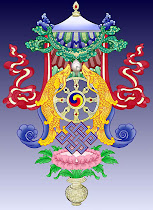Tibetan singing bowls are used for healing and to induce deep states of meditation. If you are looking for a sound that will soothe both your mind and soul, listen to the sounds of a Tibetan singing bowl. In a word, it's amazing! It is pure sound and will rapidly induce a relaxed and meditative state for anyone who listens to them.
Tibetan singing bowls are classified as standing bells where the bottom of the bell rests on a surface, and it is inverted instead of the way bells are traditionally placed. The sides and rim of the bell vibrate to produce sounds and have long been used in
There are debates concerning the use of the singing bowls, and many stories have been woven around these sacred bells. Some feel that they are simply a prop to use during prayer and chanting, while others believe they possess magical transformational powers that can alter both self and matter. While they are universally utilized as part of religious practice, their sound also makes a great background for meditation, trance-induction, relaxation and personal well-being. Of all of the singing bowls out there, the culture best known to employ them is
Tibetan singing bowls make sound by friction created by rubbing plastic, wood or leather wrapped mallets along the rim of the bowl which produces a natural harmonic resonance or tones which resemble a singing sound. There are all levels of quality when it comes to Tibetan singing bowls and each one produces a unique sound. Singing bowls can also make different sounds by using different instruments to strike the bell.
While modern bowls are produced from either brass or some other simple alloys, the prized sounds emanate from the antique bowls which are made of Panchaloha which is Sanskrit for five metals. It is a conglomeration of bronze alloy, tin, iron, zinc and copper. These bowls are multiphonic and polyharmonic in that they can produce overtones that sound like unique instruments. Many of the antique bowls are also made up of gold, silver and nickel producing a unique warm sound. Traditional techniques that went into making the Tibetan singing bowls have been lost, and the newer bowls have a difference in quality and sound as a result.
The modern Tibetan singing bowl has seen an improvement in quality and sound as new technology works to recapture what was lost in traditional methods from antiquity. They are now part of the religious identification and description, symbols and are used in conjunction with the Tibetan mantras, Buddha images and Ashtamangala, the sacred suite of Eight Auspicious Signs that are part of many Indian religions. While the complete tonal structure hasn't been replicated in the modern Tibetan singing bowls, the new handmade bowls are still wonderful, producing multiple harmonic overtones that come very close to their ancient cousins.




